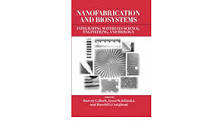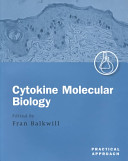Descrição
This book discusses nano- and microfabrication, and how biologists are using such fabricated devices in their research. The goal of the book is to inform materials scientists and engineers about the needs of biologists, and equally, to inform biologists about how nano- and micro-scale fabrication may help to shed light on their own particular research problems. The book also aims to stimulate innovative, productive interactions between materials scientists, engineers, and biologists; and, to explore ways that materials scientists and engineers can exploit biological principles and biological assemblies to produce new and ever-smaller devices. In addition to serving as a resource for scientists in the field, the book is also intended for any biologist or physical scientist who wishes to understand the current state-of-the-art, and what research is currently being done using biological nanofabrication. – CONTENTS.: Introduction: The frontiers and challenges L. W. Jelinski, H. C. Hoch, and H. G. Craighead
1. High resolution lithographic techniques for semiconductor nanofabrication A. Forchel, P. Ils, R. Steffen, M. Bayer – 2. Principles of materials etching R. Germann 3.The development and application of micromechanical devices in biosystems K. D. Wise 4. Microsensors and microactuators for biomedical applications M. Esashi 5. The use of micromachined structures for the manipulation of biological objects M. Washizu 6. Light addressable potentiometric sensor: applications to drug discovery H. M. McConnell 7. A surface plasmon resonance biosensor for characterization of biospecific interactions M. Malmqvist
8. Standard test targets for high resolution light microscopy R. Oldenbourg, S. Inoué, R. Tiberio, A. Stemmer, G. Mei, and M. Skvarla 9. Cell constituent analysis: single cell sensitivity P. J. Beyer, R. A. Lee, M. R. Wood, N. Winograd, A. G. Ewing 10. Scanning force microscopy of biological macromolecules: present and future C. Bustamante, D. A. Erie, G. Yang 11. Nanoscale structures engineered by molecular self-assembly of functionalized monolayers D. L. Allara 12. Biofunctionalized membranes on solid surfaces R. Tampé, C. Dietrich, S. Gritsch, G. Elender, L. Schmitt 13. Molecular assembly technology for biosensors M. Aizawa, K. Nishiguchi, M. Imamura, E. Kobatake, T. Haruyama, Y. Ikariyama 14. Self-organized orderedgrowth of III-V semiconductor quantum wires K. Ploog 15. Formation of a simple model brain on microfabricated electrode arrays A. Kawana 16. Cellular engineering: control ofcell-substrate iInteractions P. E. Hockberger, B. Lom, A. Soekarno, K. E. Healy 17. Micro-control of neuronal outgrowth H. M. Buettner 18. Microfabricated surfaces in signaling for cell growth and differentiation in fungi H. C. Hoch, R. J. Bojko, G. L. Comeau, D. A. Lilienfeld 19. Effects of surface topography of implant materials on cell behavior in vitro and in vivo D. M. Brunette 20. Cell and growth cone behavior on micropatterned surfaces P. Clark 21. Force generation by the microtubule-based motor protein kinesin F. Gittes, E. Meyhöfer, S. Baek, D. Coy, B. Mickey, J. Howard 22. Contemporary problems in biology: contractile materials G. H. Pollack 23. Technology needs for the human genome project David T. Burke – Index.
by
- Hardcover : 443 pages
- ISBN-10 : 0521462649
- ISBN-13 : 9780521462648
- Livro sem uso, com paginas amareladas e um pouco sujas pelo tempo – capa, contracapa, bordas e paginas integras. sem marcas, grifos, marcações ou qualquer tipo de detalhe que possa interferir na leitura ou pesquisa – Conteudo perfeito




